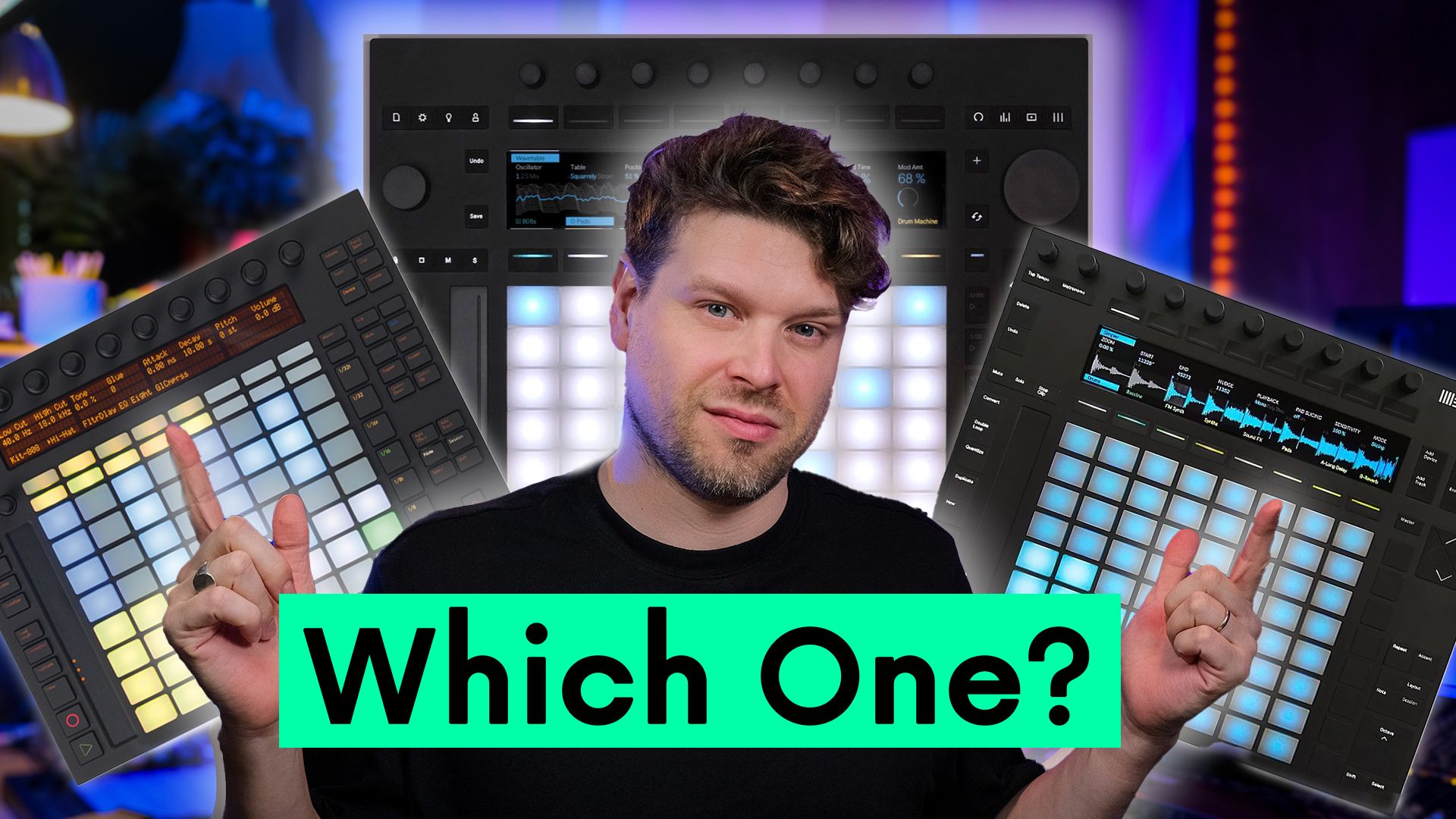Ableton Push 1 vs. Push 2 vs. Push 3: Which Controller Is Right for You?
Feb 28, 2025
Ableton Push 1 vs. Push 2 vs. Push 3: Which Controller Is Right for You?
Ableton has once again raised the bar with the release of Push 3, offering producers and performers a new level of control and creativity. But how does it compare to its predecessors, Push 1 and Push 2? If you're just upgrading or buying your very first Push controller, this in-depth comparison will help you decide which one best suits your workflow and budget.
Compatibility with Ableton Live 12
The good news? All three models—Push 1, Push 2, and Push 3—are compatible with Ableton Live 12. However, the level of integration differs. Push 2 and Push 3 offer a seamless visual experience with their advanced screens, while Push 1 provides a more basic but functional interface.

Display Screens – A Significant Evolution
Push 1: Basic But Functional
The original Push introduced an early form of screen-based feedback, but it feels dated by today’s standards. Think of it like a classic Nokia phone—reliable, but not the most visually engaging.
Push 2 & Push 3: Refinements and Innovations
Push 2 brought a major leap forward with a vibrant, high-resolution screen that transformed how users interact with Ableton Live. Push 3 takes it even further by allowing clip launching directly from the display. A recent update enhances this with rotary-based navigation, something Push 2 lacks.
Navigation & Workflow Enhancements
Push 1 & Push 2: Steady Progress
Push 1 and Push 2 share a similar navigation layout, with Push 2 refining the experience for smoother transitions and better organisation.
Push 3: Streamlined Control
Push 3 introduces jog wheels and enhanced navigation controls, making scrolling through devices, selecting sounds, and adjusting parameters faster and more intuitive. It’s designed to keep you focused on making music rather than reaching for your mouse.

Pad Evolution – From Akai’s Legacy to MPE Expressiveness
Push 1: Reliable But Limited
Designed in collaboration with Akai, Push 1’s pads are sturdy but lack sensitivity and expressiveness.
Push 2: Greater Responsiveness
Push 2 improved pad sensitivity, allowing for more dynamic playing in both note and drum modes.
Push 3: The MPE Revolution
Push 3 introduces MIDI Polyphonic Expression (MPE), unlocking new creative potential. With MPE-enabled pads, you can control individual note parameters, slide between notes like a stringed instrument, and modulate effects with pressure or movement. Ableton Live’s recent updates fully embrace MPE, making sound design more dynamic than ever.
Standalone Mode – Push 3’s Game-Changer
The biggest leap with Push 3 is its standalone capability, turning it into a self-contained production powerhouse. With a built-in audio interface, MIDI I/O, and expandable ins and outs, you can:
- Produce music without a computer.
- Sketch ideas on the go and upload them to the cloud.
- Use it as a central hub in a studio setup, integrating hardware synths and modular gear.

Pricing & Value for Money
Push 1: The Budget Choice
A second-hand Push 1 can be found for as little as £50 to £80, making it a great entry point for beginners.
Push 2: The Studio Workhorse
A used Push 2 sells for around £200-£300, offering excellent value with its robust screen and playability.
Push 3: The Premium Option
At £1,669 (as of February 2025), the standalone version of Push 3 is a serious investment. However, its advanced features make it a powerful choice for producers looking to untether from their computer.
Shared Features Across All Models
Despite their differences, all Push controllers offer these core functionalities:
- Session view for clip and scene launching.
- Note and drum modes for composition and performance.
- Customisable scale and layout options.
The key distinction lies in how much they allow you to break away from the computer.
Choosing the Right Push for You
Push 1: For the Basics
If you want an affordable controller to explore Ableton’s capabilities without the need for advanced features, Push 1 is the way to go.
Push 2: For Studio Producers
Push 2’s improved screen and pads make it ideal for producers who work primarily in the studio and don’t need standalone functionality.
Push 3: For Maximum Freedom
Push 3 is the ultimate choice for producers seeking a computer-free workflow. If you're creating on the move or performing live, its versatility is unmatched.
Consider your workflow, budget, and how much you want to step away from your computer before making your decision. Watch this video to help you decide:
FAQs
What makes Push 3’s standalone feature unique? Push 3 includes a built-in computer, allowing for entirely independent music production without a laptop.
Is it worth upgrading from Push 2 to Push 3? If you need standalone functionality or MPE capabilities, absolutely. Otherwise, Push 2 remains a fantastic option.
Are there affordable alternatives to Ableton Push controllers? Yes! Several third-party controllers work seamlessly with Ableton Live. Research their features to find the best fit.
How does MPE technology enhance music production? MPE allows for expressive control over individual note parameters, offering a more dynamic and realistic sound design experience.
Can Push 3 replace a traditional DAW setup entirely? For many producers, yes. Its standalone mode, built-in audio interface, and robust workflow make it a powerful alternative.
If you are interested in learning Ableton Live 12 or the Push 3 in a bit more detail, check the course here:

